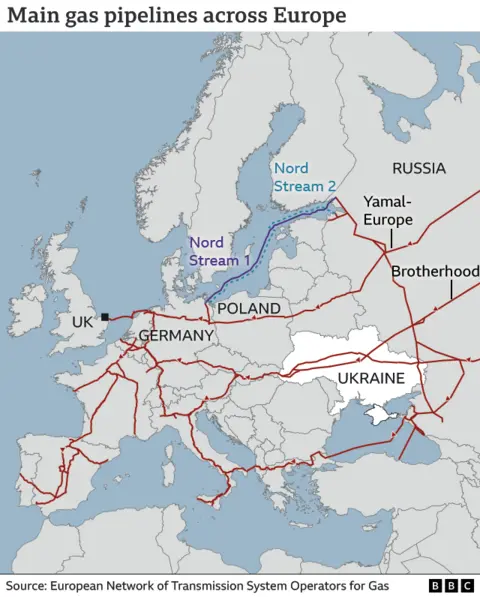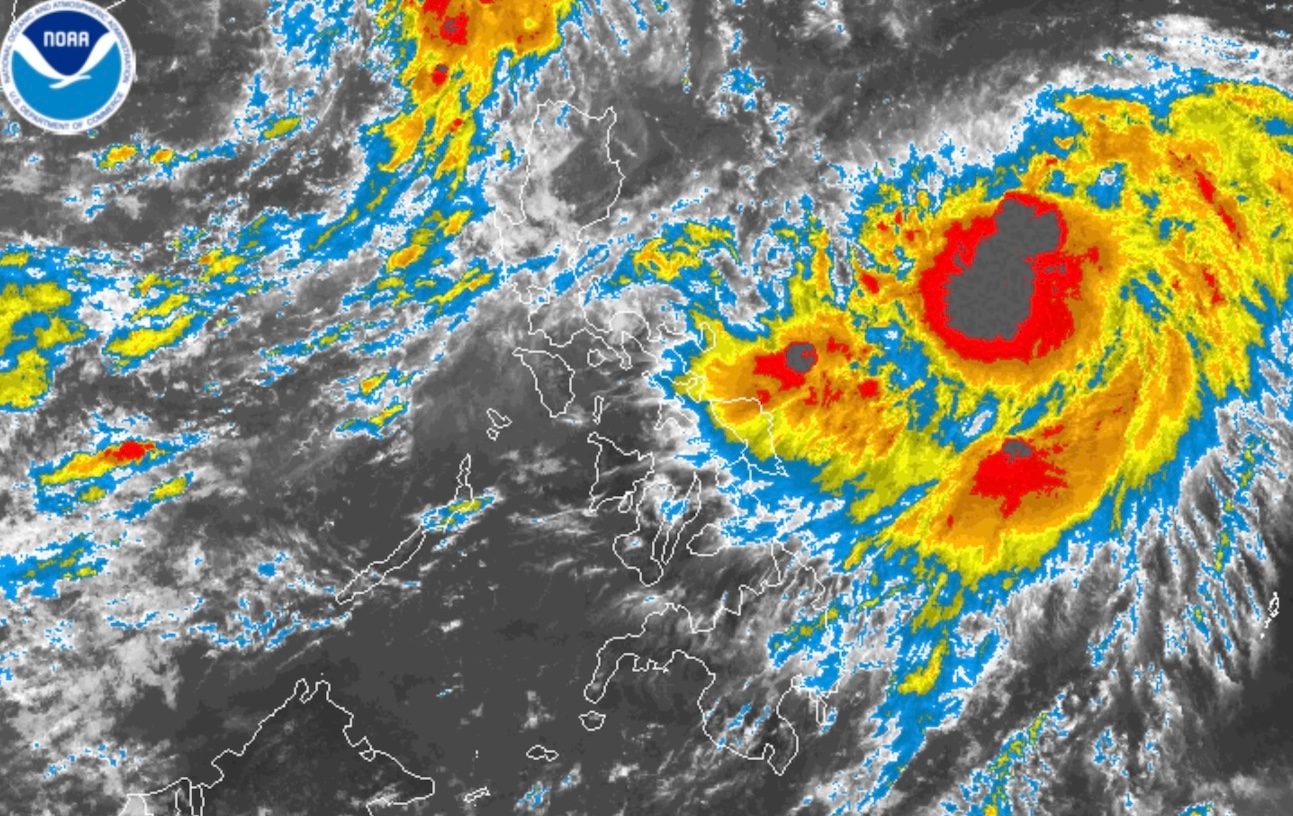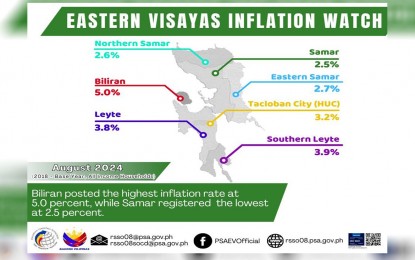More in Economy

Serbia to Finalize Three-Year Russian Gas Import Agreement Amid Western Sanctions Pressure
Serbia is preparing to ink a three-year natural gas import agreement with Russia next month, ensuring an annual delivery of 2.5 billion cubic meters, according to Dusan Bajatovic, the head of the state-run gas company Srbijagas, in an interview with the public broadcaster RTS on Tuesday. Bajatovic highlighted that Serbia currently obtains 2.5 million cubic meters of natural gas daily from Azerbaijan, supplemented by an additional 9.5 million cubic meters each day imported from Russia. The country’s primary gas storage facility has a capacity of 780 million cubic meters, with a supplementary option to secure another 200 million cubic meters from a Hungarian storage site if necessary. Despite ongoing tensions caused by Russia’s invasion of Ukraine and consistent calls from Western nations to enforce EU sanctions, Serbia remains one of the few European countries continuing to purchase Russian gas. The government has yet to impose sanctions on Russia, even as the country seeks European Union membership. Further complicating the situation, Serbia’s dominant oil company NIS, which is majority-owned by Russia’s Gazprom Neft and Gazprom, is actively pursuing a seventh extension to delay the implementation of U.S. sanctions that could disrupt its crude oil imports. In a related development, Serbian President Aleksandar Vucic is scheduled to meet with U.S. Secretary of State Marco Rubio later on Tuesday. The discussion is expected to cover issues related to tariffs and sanctions affecting NIS, alongside broader bilateral concerns.
Economy
|2 min read

Devastating Floods in Pakistan Cause Widespread Economic and Agricultural Damage
Severe flooding in Pakistan has affected both its rural heartlands and key industrial hubs for the first time in decades, resulting in billions of dollars in damage and significant disruptions to food supplies, exports, and the nation’s fragile economic recovery. After anticipating 4.2% economic growth in 2026 driven by a rebound in agriculture and manufacturing under a $7 billion IMF bailout program, government officials are now forced to reassess. Since late June, unprecedented monsoon rains compounded by water releases from India’s dams have flooded large areas in Punjab and Sindh — Pakistan’s most populous and economically important provinces. Floodwaters remain in many districts, with analysts warning that the current crisis could eclipse the devastation of 2022, when one-third of the country was submerged. Satellite data from agricultural monitoring initiative GEOGLAM revealed that at least 220,000 hectares of rice fields were flooded between August 1 and September 16. In Punjab alone, approximately 1.8 million acres of farmland have been affected, according to the provincial disaster management agency. Khalid Bath, chairman of the Pakistan Farmers Association, highlighted the scale of the agricultural losses, stating, "About 50% of rice, and 60% of cotton and maize crops have been damaged. We estimate losses could surpass 2.5 million acres, potentially costing up to one trillion rupees ($3.53 billion)." Iqrar Ahmad Khan, former vice chancellor of the University of Agriculture Faisalabad, described the situation as unprecedented in recent decades, estimating that over 10% of national crops have been destroyed, with vegetable crops suffering up to 90% losses in some areas. The timing of the floods is critical as Pakistan approaches the wheat sowing season, a staple crop contributing nearly half of the country’s caloric intake. While national food reserves remain stable following a robust 2024 harvest, the continued presence of silt and mud on agricultural fields poses a serious risk to upcoming planting efforts. Khan warned, "Food insecurity is coming, not just higher prices." Planning Minister Ahsan Iqbal acknowledged the floods would set back GDP growth and anticipated a clearer assessment of damages within two weeks. The central bank described the flooding as a "temporary yet significant supply shock," adjusting growth forecasts to the lower end of their 3.25–4.25% range. The bank also cited stronger foreign exchange reserves and reduced interest rates as buffering factors against the economic impact. However, rising prices for wheat, sugar, onions, and tomatoes have pushed Pakistan’s sensitive price index to a 26-month high. IMF resident representative Mahir Binici noted that the upcoming review of the Extended Fund Facility would evaluate the government’s budget and emergency measures to address the crisis. Iqbal urged the IMF to assist in mitigating the damage. Some experts caution that the full economic repercussions are being underestimated. Former finance minister Hafeez Pasha stated, "The floods will increase the current account deficit by $7 billion. They are worse than the previous floods." The industrial sector has also suffered substantial losses. In cities like Sialkot, a major manufacturing center for textiles, sporting goods, and surgical instruments, flooding left numerous workshops isolated. Cotton shortages threaten the textile industry, Pakistan’s largest source of foreign exchange, while rice exporters fear losing market competitiveness to India amid rising prices. Local farmer Rab Nawaz reported, "We once had 400 acres of cotton, but now only 90 remain," reflecting the widespread agricultural devastation. The National Disaster Management Authority confirmed that at least 1,006 people have died since June 26, with over 2.5 million displaced in Punjab and Sindh. In Lahore, the provincial capital, homes and small businesses have been destroyed. Mohammad Arif, a 50-year-old rickshaw driver, shared his ordeal: "We have been on the roads for three days," after relocating his vehicle as floodwaters engulfed his home. As floodwaters continue to challenge recovery efforts, the humanitarian and economic fallout presents a daunting test to Pakistan’s resilience.
Economy
|4 min read

Tropical Storm Opong (Bualoi) Strengthens, Set to Impact Bicol and Southern Luzon
Tropical Storm Opong, internationally named Bualoi, has intensified from a tropical depression to a tropical storm over the Philippine Sea, according to the Philippine Atmospheric, Geophysical, and Astronomical Services Administration (PAGASA). As of early Wednesday, September 24, Opong exhibits maximum sustained winds of 65 kilometers per hour, with gusts up to 80 km/h, marking an increase from earlier measurements. Opong is currently positioned approximately 855 kilometers east of northeastern Mindanao and is moving west-southwest at 20 km/h. The weather agency anticipates further strengthening of the system into a severe tropical storm by Thursday evening, September 25, with additional intensification possible. Residents in the eastern and northern Visayas as well as areas in Bicol are expected to face moderate to torrential rainfall starting Thursday and continuing into the weekend. Specific rainfall forecasts include 50-100 millimeters in Eastern and Northern Samar on Thursday, and more than 200 millimeters in Sorsogon and Northern Samar on Friday. Metro Manila and several provinces including Quezon, Camarines Norte, and Albay are also anticipated to experience heavy rains ranging from 50 to 200 millimeters. PAGASA has raised Tropical Cyclone Wind Signal No. 1 for northeastern Mindanao, Eastern Visayas, and Bicol starting Wednesday, providing a 36-hour preparation window. The highest wind signal due to Opong may reach Signal No. 3. Concurrently, the southwest monsoon, intensified by both Opong and Super Typhoon Nando, will trigger strong to gale-force winds in parts of Luzon, Visayas, and Mindanao over the coming days. The weather bureau cautioned communities along coastal areas of Southern Luzon and Eastern Visayas to prepare for potential storm surges starting Wednesday or Thursday. Sea conditions are expected to worsen to moderate or rough beginning Thursday afternoon in these regions. Opong is forecasted to make landfall in the Bicol region by Friday afternoon, September 26, and traverse Southern Luzon through Saturday morning, September 27. PAGASA emphasized that heavy rainfall, strong winds, and storm surges could impact areas outside the predicted landfall zone due to possible shifts in the storm's track within the forecast cone. The tropical storm is expected to exit the Philippine Area of Responsibility (PAR) by late Saturday or early Sunday, September 28. Opong is the 15th tropical cyclone to enter the country in 2025 and the fifth in September, arriving just hours after the departure of Super Typhoon Nando. Meanwhile, Super Typhoon Nando has weakened as it moves west-northwestward, located 775 kilometers west of Itbayat, Batanes, and is projected to make landfall in southern China by Wednesday evening. Despite this, the typhoon still exhibits sustained winds of 185 km/h and gusts up to 230 km/h, though weakening is expected after landfall. Nando previously made landfall in Panuitan Island, Cagayan, at its peak strength of 215 km/h on September 22. All tropical cyclone wind signals were lifted following its exit from the PAR, but rough to moderate sea conditions persist in Luzon, particularly in the northern seaboards and parts of western Luzon. In addition to the tropical cyclones, the southwest monsoon continues to affect Luzon and Visayas, bringing moderate to heavy rainfall in provinces such as Zambales, Bataan, Occidental Mindoro, Palawan, and parts of the Visayan islands through the weekend. Mindanao is forecasted to have generally fair weather with localized thunderstorms. PAGASA advises residents to remain vigilant, monitor official advisories, and prepare for possible weather-related hazards as these weather systems progress.
Economy
|3 min read

Philippines Enacts Law for Early Disaster Response to Mitigate Impacts
The Philippine government has enacted the Declaration of State of Imminent Disaster Act (Republic Act No. 12287), a pioneering legislation that integrates anticipatory action within the nation’s Disaster Risk Reduction and Management Framework. This new law was crafted by the Office of Civil Defense (OCD) with technical assistance from the United Nations World Food Programme (WFP) and other partners. The legislation authorizes government agencies to initiate early interventions based on hazard forecasts and risk assessments conducted before disasters occur. By doing so, it aims to protect lives, livelihoods, and properties ahead of time rather than relying solely on post-disaster relief. Anticipatory action involves the use of early warning data and pre-arranged funding mechanisms to reduce the potential humanitarian consequences of impending hazards. This approach enables communities to take precautionary measures, safeguarding themselves and their assets before emergencies fully develop. Undersecretary Harold Cabreros, Administrator of the OCD, highlighted the significance of the law, stating, \"The passage of Republic Act No. 12287 represents a major advancement in our country's ability to manage disaster risks proactively. This policy ensures better protection, particularly for the most vulnerable sectors during emergencies.\" The law empowers the National Disaster Risk Reduction and Management Council to recommend a declaration of imminent disaster to the President or for local councils to advise local chief executives. Such declarations trigger the early release of government funds to implement risk mitigation efforts, changing the disaster management paradigm from reactive to proactive. Regis Chapman, WFP Philippines Representative and Country Director, emphasized the importance of this legislation in the context of the country's exposure to natural hazards: \"With the Philippines experiencing an average of 20 typhoons annually, this law is crucial for enhancing disaster preparedness and response, especially concerning climate-related shocks. Anticipatory action saves lives and significantly lowers emergency response costs.\" Since 2015, WFP has collaborated with Philippine authorities to weave anticipatory action into disaster management at both national and local levels, promoting sustainable early action programs. Their efforts include anticipatory cash assistance schemes activated before typhoons in regions such as Bicol, CARAGA, and Eastern Visayas. Moreover, the approach is being localized in municipalities vulnerable to hazards like typhoons, floods, storms, and landslides, including Jabonga, Legazpi City, New Bataan, and Palo. The United Nations World Food Programme, as the largest global humanitarian agency, continues to support such initiatives that save lives and foster recovery from crises caused by conflict, disasters, and climate change.
Economy
|2 min read

Pangasinan Provincial Hospitals Strengthen Security Measures Following Newborn Abduction
MALASIQUI, Pangasinan – In response to recent security incidents, including the abduction of a newborn, the Provincial Hospital Management Services Office (PHMSO) in Pangasinan has mandated stricter safety measures in all 14 provincial government hospitals. Dr. Tracy Lou Bitoy, PHMSO head, issued a memorandum on Wednesday directing hospital administrations to immediately enhance security. "This memorandum serves as a directive to immediately review, reinforce, and implement stricter security measures across all facilities," she stated. Hospitals are required to conduct comprehensive security evaluations, identify potential vulnerabilities, and bolster the presence of security personnel, particularly during peak periods and nighttime. Access to sensitive areas such as intensive care units, operating rooms, and pharmacies must be strictly controlled, allowing entry only to authorized personnel following verification of identification. Additionally, the memorandum calls for upgrades to surveillance equipment, ensuring all CCTV cameras are functioning and effectively cover critical areas. Where gaps in monitoring exist, hospitals are instructed to procure additional units or formally request their installation. Dr. Bitoy emphasized the importance of coordination with local law enforcement agencies and the implementation of regular security drills and staff training to enhance emergency preparedness and awareness. "Our healthcare facilities must remain a place of safety for healing and care. Let us work together to safeguard our hospitals and uphold public trust," she added. This move follows a recent incident at Lingayen District Hospital involving the abduction of a newborn, who was fortunately recovered and returned to the family while the suspect was apprehended. Governor Ramon Guico III earlier announced the reinforcement of security and visitation regulations across the province's hospitals to prevent similar occurrences.
Economy
|2 min read

Department of Agriculture Pushes to Boost Corn Production Amid Livestock Demand
ILOILO CITY – The Department of Agriculture (DA) has announced plans to escalate corn production in the country to address the current supply gap, particularly driven by the livestock industry’s growing needs. During the 18th National Corn Congress-Visayas Cluster held at the Iloilo City Convention Center on September 23, National Corn Program Director Milo Delos Reyes revealed that the livestock sector requires approximately 10 million metric tons (MMT) of corn, while current production stands at around six MMT. "We are intensifying corn production efforts for the upcoming year. This year, we’ve been assisting farmers with the provision of seeds, post-harvest support, fertilizer, and other critical interventions," Delos Reyes stated during a press briefing. He emphasized the importance of expanding corn planting to balance supply with demand, noting a three MMT increase in national corn output over the past five years. Despite surpluses in some regions, areas like the Visayas still lag, partly due to the absence of feed mills found in provinces such as Cebu and Iloilo. "Events like this corn congress aim to motivate farmers to sustain their planting efforts. There is consistent profitability in cultivating corn," Delos Reyes added. Agriculture Regional Executive Director of Western Visayas, Dennis Arpia, highlighted initiatives to plant corn after rice cultivation in regions lacking sufficient irrigation during dry seasons. Western Visayas currently maintains about 47,000 hectares of corn fields. Arpia also underscored the significance of improved farm management practices and the adoption of advanced technologies, including enhanced post-harvest and storage facilities. Efforts are underway to introduce superior corn varieties, expand farmer support, and implement innovations such as bio-fertilizers, improved soil conditioning, and integrated pest management. The congress attracted roughly 500 corn farmers and stakeholders from across the Visayas and was held in collaboration with the Philippine Maize Federation, Inc. DA Undersecretary for Operations and Agri-Fisheries Mechanization Roger Navarro attended the event. The three-day congress seeks to build stronger collaborations among farmers, government bodies, and the private sector, encourage the adoption of modern agricultural technologies, and raise awareness about corn’s critical role in both regional and national economic growth.
Economy
|2 min read

CIDG Seizes Over P600,000 Worth of Counterfeit Tire Sealant in Mandaue City Sting
More than P600,000 worth of counterfeit tire sealant was confiscated by the Criminal Investigation and Detection Group (CIDG)–Cebu City Field Unit following an entrapment operation targeting a Chinese businessman couple. The operation occurred between 3 p.m. and 5 p.m. on Wednesday, September 17, 2025, in Zone 2, A. Del Rosario, Mantuyong, Mandaue City. Police Lieutenant Colonel Jerick Filosofo, the information officer of CIDG Region 7, stated that the investigation originated from a complaint filed by Koby Tyre Sealant. The company reported sales of fake sealant products mimicking their brand within the area. Representatives from Koby Tyre Sealant presented the counterfeit items, highlighting their similarity to the authentic product except for the significantly lower price point. Following a comprehensive information-gathering process, CIDG launched the operation under "Oplan Mega Shopper," the group’s flagship enforcement initiative. During the raid, authorities confiscated over 300 cartons of the counterfeit Koby Tyre sealant, valued at approximately P604,800. The suspects, identified only by the aliases Melane and Ming, were apprehended and taken into custody. Legal charges have been filed against the suspects for violating Sections 155 and 168 of Republic Act 9283, the Intellectual Property Code, according to authorities. This crackdown underscores law enforcement’s commitment to combating intellectual property infringements and protecting consumers from counterfeit goods.
Economy
|2 min read

Nearly Half of Eastern Visayas Households Face Moderate to Severe Food Insecurity, Survey Finds
TACLOBAN CITY – The 2023 National Nutrition Survey reveals that 43.9 percent of households in Eastern Visayas endure moderate to severe food insecurity, ranking the region second highest among the country’s 17 regions. This figure significantly exceeds the national average of 31.4 percent, the Department of Science and Technology-Food and Nutrition Research Institute (DOST-FNRI) disclosed on Wednesday. According to Ma. Lynell Maniego, a senior science research specialist at DOST-FNRI, the Food Insecurity Experience Scale indicates that four out of every ten households in Eastern Visayas face moderate to severe food insecurity. The prevalence is notably higher among economically disadvantaged families. "Moderate to severe food insecurity is experienced by four in every 10 households in Eastern Visayas based on the Food Insecurity Experience Scale. The prevalence is significantly higher among poor households," Maniego stated during the presentation in Tacloban City. Rod Paulo Lorenzo, DOST-FNRI science research specialist, highlighted that the typical daily diet in the region consists mainly of rice, fish, and vegetables, mirroring national consumption patterns. He noted, "These food items were also the most discarded foods in this region. Rice, as the major source of energy, contributes 62.4 percent of the total intake." The survey also found that the average energy intake of individuals across all age groups in Eastern Visayas falls below the Recommended Energy Intake, signaling inadequate nutritional consumption. The 2023 NNS surveyed 2,543 households across the six provinces in Eastern Visayas, aiming to provide critical data on the nutritional and health status of the population to guide policy formulation and nutrition programming at both regional and national levels. Catalino Dotollo, Regional Program Coordinator of the National Nutrition Council for Eastern Visayas, emphasized the urgent need to boost the production of nutritious food in the region. He urged stakeholders to intensify efforts in promoting backyard and communal gardens, school-based vegetable gardening, and livelihood initiatives spearheaded by local government units. "We really have to strengthen our advocacy on backyard or communal garden, school-based vegetable gardening, and livelihood programs by local government units," Dotollo said via text message. DOST-FNRI explained that food insecurity results from the physical unavailability of food, insufficient social or economic access, and inadequate utilization of food resources. Eastern Visayas trails only behind the Bangsamoro Autonomous Region in Muslim Mindanao, which recorded a food insecurity rate of 48.2 percent. The survey data is expected to inform more responsive and targeted interventions to address food insecurity and malnutrition in the region.
Economy
|3 min read

Iloilo City Police Arrest Two in Major Drug Bust Seizing P408K Worth of Shabu
Operatives from the Iloilo City Police Station 2 apprehended two high-value suspects and confiscated nearly 60 grams of methamphetamine, locally known as shabu, during a buy-bust operation in Barangay Nabitasan, La Paz District, at approximately 2:30 a.m. on September 24, 2025. The detained individuals were identified as 23-year-old alias Toto Bot-bot, a construction worker residing in Barangay San Pedro, Jaro District, and 25-year-old alias Nonoy Negro, also a construction worker from Mainuswagon, Barangay Bolilao, Mandurriao District. Authorities recovered 10 sachets of the illegal substance, a cartridge of a high-explosive item, the buy-bust money, and other related paraphernalia from the suspects. Police Brigadier General Josefino Ligan, Regional Director of the Police Regional Office in Western Visayas (PRO 6), highlighted the significance of the operation in sustaining their aggressive campaign against illegal drugs. \"This successful operation demonstrates our unwavering dedication to eliminating illegal drugs in Western Visayas. We will persist in targeting those who endanger the peace and security of our communities. With public support, we are confident that a drug-free region is attainable,\" General Ligan stated. The suspects are currently held at ICPS 2 and face charges under Sections 5 and 11 of Republic Act 9165, also known as the Comprehensive Dangerous Drugs Act of 2002. Conviction under this law carries penalties including life imprisonment and fines ranging from P500,000 to P10 million. The Iloilo City Police Office confirmed that the seized drugs and related items have been forwarded to the crime laboratory for analysis. Case files are being prepared to facilitate the formal filing of charges.
Economy
|2 min read

Senator Criticizes Exorbitant Ticket Prices at FIVB Men’s Volleyball World Championship in Manila
Senator Erwin Tulfo has strongly condemned the steep ticket prices for the ongoing FIVB Volleyball Men’s World Championship held in Manila, describing them as unaffordable for typical sports enthusiasts. During his privilege speech, Senator Tulfo highlighted that tickets priced as high as ₱15,000 have effectively alienated many potential spectators, causing the event to suffer from thin attendance. He called for a thorough inquiry into the tournament, which features 32 of the world's top volleyball teams and reportedly costs the Philippines a staggering ₱2 billion to host. Tulfo warned that such prohibitive pricing undermines the spirit of sports accessibility, stating, \"₱15,000 just to watch volleyball — who would buy such expensive tickets? Certainly, not ordinary students or passionate volleyball fans from the provinces, or the young aspiring athletes.\" Due to the low turnout, the Philippine National Volleyball Association (PNVF), organizer of the event, was forced to cut ticket prices by half and released free seating on a first-come, first-served basis for seats farther from the action. This adjustment underscores the mismatch between ticket pricing and fan reach. Senator Tulfo's remarks emphasize the need to balance event costs with ensuring that sports events remain inclusive and accessible to the general public, especially for young fans and future players. "Proper pricing is crucial for the successful engagement of the Filipino sports community," he concluded.
Economy
|2 min read
